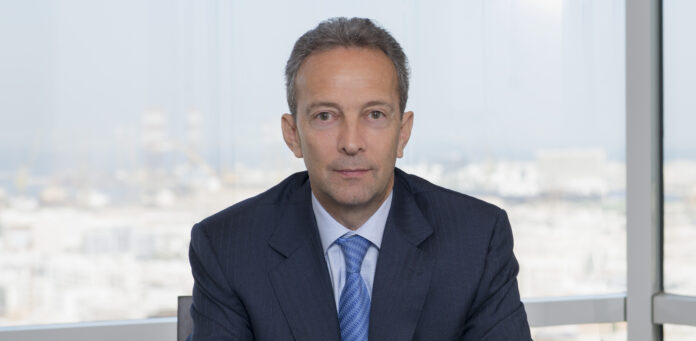Global Sukuk issuance has moderated through 2022, what do you see as the reasons for this?
According to S&P Global, total Sukuk issuance has decreased by 20% over the first half of 2022, compared to the same period last year. This is a result of global macroeconomic considerations, most notably rising inflation, which has led to central banks around the world increasing interest rates. These rate hikes have reduced liquidity and made it more expensive for companies to borrow, and in turn has lessened investor appetite for asset classes across the board, Sukuk included.
This theme has been offset slightly by some core Islamic financing markets, such as Turkey, Bahrain, and the UAE, which have reported marginally higher Sukuk issuances in the same period. In contrast, Malaysia, Saudi Arabia, Indonesia and Kuwait have experienced the largest reduction in Sukuk issuance this year.
In addition to the rising rate environment, we forecast this trend will continue due to lower funding needs in certain countries given higher oil prices have moved some from experiencing fiscal deficit to surplus.
How are commodity prices affecting the current economic outlook on core Islamic finance markets?
Commodity prices are, and have historically had, a profound impact on the economic outlook of global markets. The price of Brent oil has softened to USD 93, after having surged to USD 98 following the recent announcement of OPEC+ supply cuts. OPEC’s latest monthly oil market report significantly revised oil demand down based on a reduction in expected Chinese demand with a mention of Covid challenges and recessions in the US and Europe, as well as its supply projections. This means that there may still be oversupply ahead.
Real GDP growth should be impacted by lower volumes and overall lower prices. However, we highlight that growth will come off a very high base. GCC GDP growth forecasts will be trimmed to reflect the reassessment of production targets from OPEC+. Moreover, concerns about the global growth outlook for next year are growing, making it likely that the increase in production quotas in 2023 will be more modest than previously forecasted. An increase in oil production in 2023 may stand at about half the rate previously expected. Nonetheless, in subsequent years, we anticipate the oil sector will still make a significant contribution to growth.
Current account balances will also be directly impacted by lower oil prices, with downward revisions for all economies, except Qatar. Healthy surpluses are still expected, although the total regional surplus will be cut, to some extent. Fiscal revenue should also be revised down slightly for most GCC countries, although not to the same degree as the oil price revision.
Despite lower oil production and prices and higher borrowing costs, we expect the GCC economies to remain resilient and avoid the recession worries affecting the US and parts of Europe. Leading indicators continue to highlight a dynamic, non-oil private sector thanks to tourism and still resilient real estate markets.
Are there constraints to the growth of Islamic Finance into new markets, and what are they?
The rising issue of worldwide inflation has forced most central banks to increase interest rates quickly, and sharply. This makes Sukuk issuances more expensive and is driving investors to deploy a risk-off approach. As a result, the Sukuk market suffered, in line with several other asset classes.
In addition, the Islamic finance industry has struggled to expand beyond its traditional markets, owing largely to structural issues around the complexity of the transactions as well as a lack of standardisation across the sector. This is in addition to the difficulty associated with identifying robust talent with the required knowledge in Islamic finance.
However, an opportunity lies in the Islamic finance market from renewable energies and sustainable investments. Climate transition investments are expanding in Islamic countries for the financing of their mega projects, including the use of solar plants and nuclear energy. This is a strong trend as sustainable Sukuk issuances have more than doubled over the last five years, and this will likely continue to grow at a robust pace.
What benefits or enhancements can blockchain, digitisation and DLT bring to Shariah compliant transactions?
There are two key angles to consider when thinking about the impact of DLT (distributed ledger technology, or Blockchain) on Shariah compliance. The first is on the technology itself, where we consider clear benefits in terms of Shariah compliance when it comes to using DLT as an infrastructure layer. Not only does it seem to be safer and faster for administration than current systems, it also provides the opportunity for smart contract overlays that govern transactions in real time. For example, it would be possible to programme transactions and block those that contain certain non-Shariah activities prior to their occurrence, such as gambling, alcohol, and interest payments. This is not only convenient for asset managers, who do not want to be exposed to non-compliance risk for their clients, but it is also helpful for the regulators who are provided with much better oversight on all market transactions. In addition to Shariah compliant smart contracts, inter-bank or cross-asset management transactions can also be settled faster and more efficiently via DLT. Reconciliation also becomes automatic, which implies larger cost savings for back-office activities.
The second opportunity lies in the possible investments on the basis of the DLT technology. This represents a valuable prospect for investors looking to diversify their portfolios by adding these digital assets to their existing asset mix.
Digitisation would bring speed, efficiency and simplification to global Shariah-compliant transactions. Today, the system is highly dependent on the executing asset manager to stay within the mandate and be classified as Shariah-compliant. Progressive technologies now provide the end investor control of these transactions and allow for full transparency of portfolios including alignment with each assets’ Shariah-compliance. This is much more convenient and granular than only looking at the wrapper-level, which is the current approach.




